A self-described artist, author, educator, stitcher, sculptor, collector, hoarder, embroiderer and talker, Priscilla Edwards takes embroidery to another dimension. Primarily working in 3D, her wire sculptures are imaginative, quirky – and sometimes unsettling.
Using a variety of mixed media techniques and found items, paper and fabric, Priscilla adds texture, colour, and machine and hand stitch to create works that explore themes of memory, identity and nostalgia. Creating is her way of making sense of the world – exploring her emotional connections to her experience even if, at times, that can be challenging.
Priscilla embraces her creativity through making and being willing to let go and trust in the process to see where experimentation takes her. Patience is an integral part of her process – whether that’s sourcing the perfect item or simply allowing a work in progress to develop organically in its own time.
Starting with my stash
Priscilla Edwards: I connect deeply with my materials; they are the most important part of my practice. Reworking found materials and ephemera is key to how my pieces unfold.
All the fabrics, threads and found objects I use are meaningful and have their own narrative, whether I’ve sourced them myself by visiting fairs and flea markets or I’m using fragments of fabrics inherited from family and friends. The materials also inspire my making. Their worn and faded qualities are so lovely and it’s a privilege to be able to work with something so precious.
Themes come and go but my stash of materials are a constant source of stimulation. My practice is materials led and starts with resourcing found materials where possible. These become the basis for new work.
“Shape, colour, pattern and surface texture are all things I record, either by drawing in my sketchbooks or recording with my phone.”
Priscilla Edwards, Textile artist
My observations of film, literature, theatre, along with sound and smell, are all part of how I create work, and I make mental or written notes on these. When I am researching a particular theme I do a lot of studying, drawing and sketching and photography.
I had always disliked photography until I got my first smartphone. This was a huge turning point as finally I found a way I could take photos that suited me. I realised I don’t like holding a camera up to my face so to be able to use something that didn’t require this was revolutionary for me. I now take tons of photos and I am totally addicted.
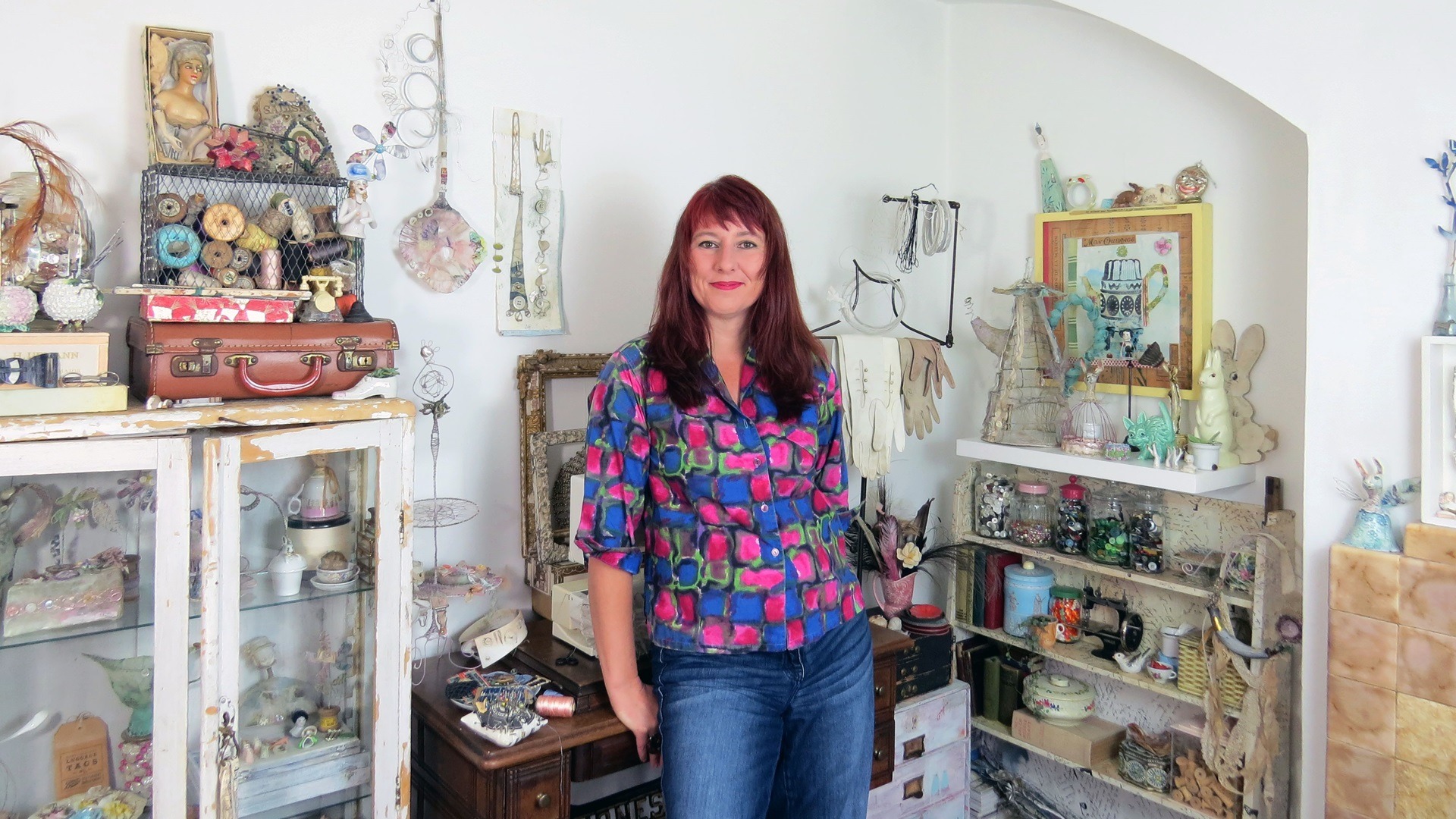
Meaning through making
I explore themes relating to memory and the emotional connections we have with the things around us. My work is both personal and nostalgic, also drawing ideas and inspiration in a broader context from literature and film, as well as from my ever-evolving collections of found objects.
I reassemble familiar materials, fusing them together in strange and eclectic ways, resolving as I go the interplay that forms a new identity for each piece.
“I make sense of the world through my making – exploring narratives that evoke a sense of my own experiences, my childhood, and emotional state.”
Priscilla Edwards, Textile artist
Some of my work is hard to make. I don’t mean physically, but mentally. As I’ve got older it’s become more complex with layers of my own history, and a sense of place and purpose have developed.
Letting ideas unfold
I usually work on several pieces at once putting materials together and experimenting. The ideas for shapes and surface qualities develop through this process. Sometimes I will start a piece, then leave it for months before returning to it.
This might be because I haven’t found the right materials to complete the work or maybe I just need to contemplate the work for a time before I can resolve the idea. Sometimes I take the work apart completely and reform it – possibly combining it with different materials or joining two or more pieces together.
My process is very organic and I’m not precious about it. If it needs to be cut up or taken apart to refocus the work, then I do just that. It sounds brutal but I find it necessary to progress with an idea and make it work.
“I will rework and rework things many times until I feel it’s right.
It’s something in the gut – an instinct that tells me yes or no.”
Priscilla Edwards, Textile artist
You must trust your instinct. I think this comes with experience and practice of understanding yourself and your own work.
I rarely destroy work completely and I have abandoned only a very few pieces of work over the years. Everything is repurposed into something new. I love the idea of an ever-evolving body of work that develops and changes over time.
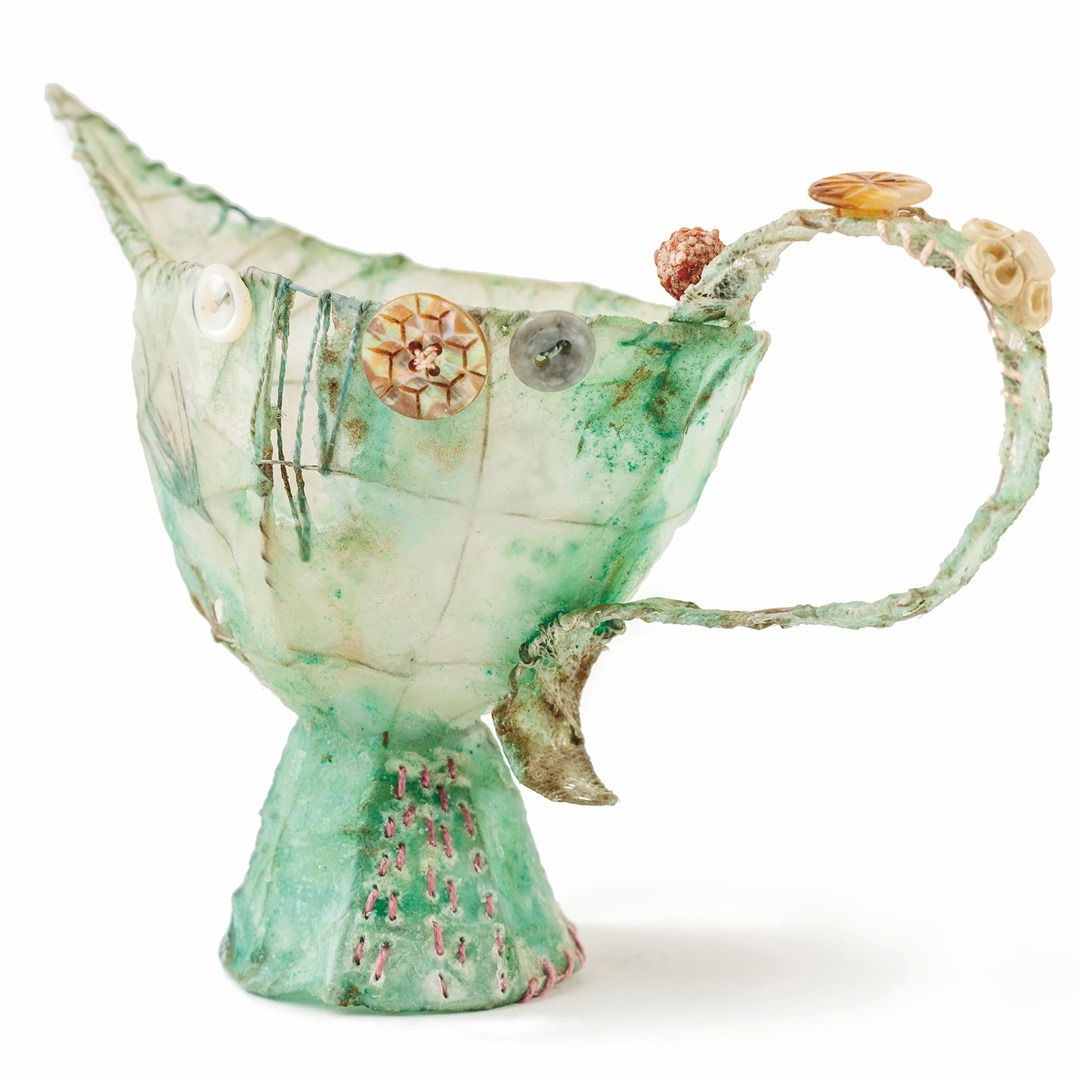
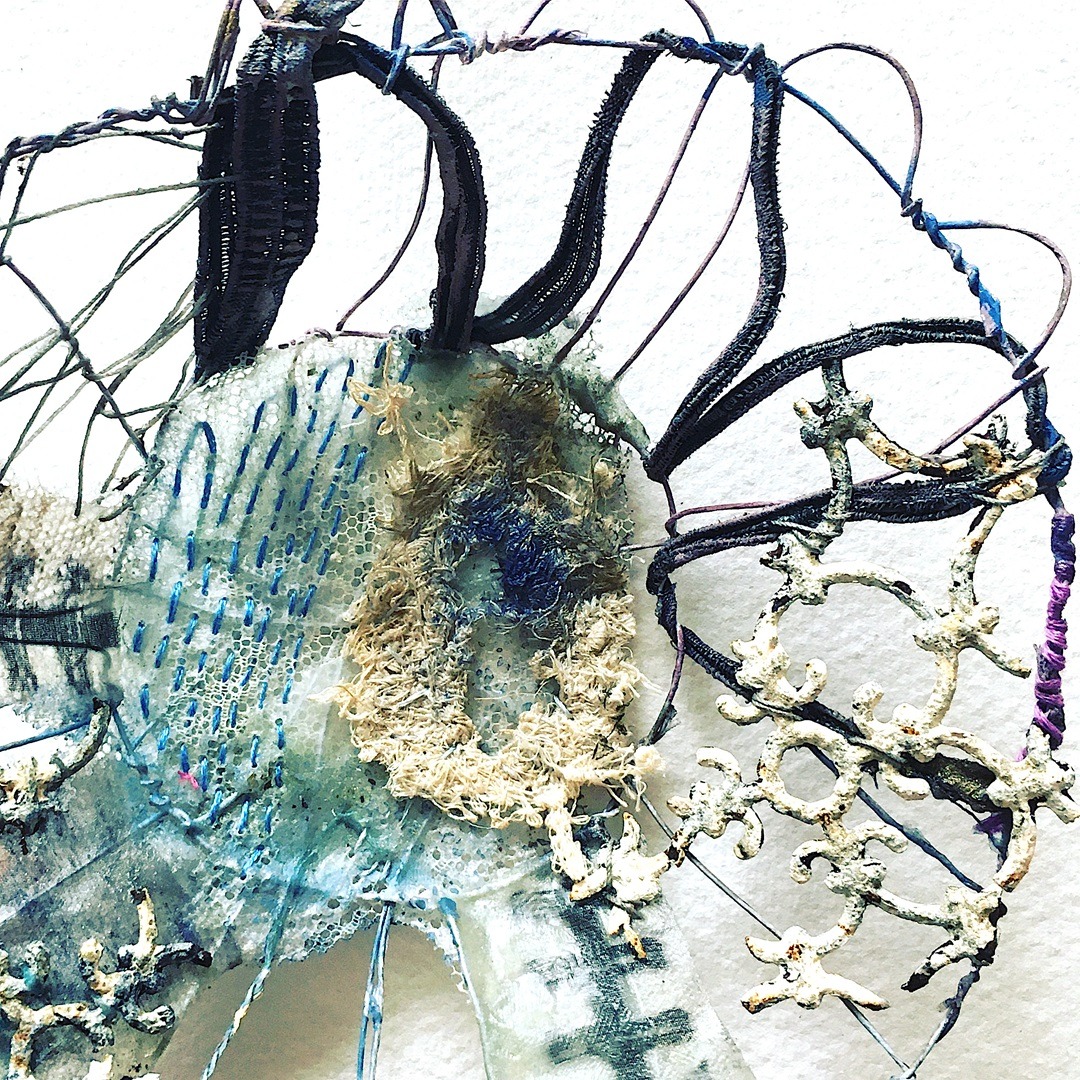
Eco ethos
Sustainability is at the heart of my practice. Working with found materials is my passion. This ethos has sustained me over the years and contributed to the work I have become known for. It’s essential for me to continue repurposing materials and using fabrics, threads and found objects.
Although it was something very few textile artists were doing 25 years ago, today everyone understands the importance of sustainability and considers more carefully what they buy – even when it comes to art. Nowadays many artists are trying to reuse and repurpose materials in their practice.
Sustainability doesn’t alter the subject matter I choose to work from, but because my work is materials led, what I can source is important. It’s critical for me to work with materials that have meaning. The tactile qualities of pre-worn fabrics and clothing makes them unique, and any work I make from them can never be repeated.
Because my background is rooted in embroidered textiles this greatly influences the way I make work. I’ve always used a mixed media approach in my practice, and work with many different materials and techniques.
Since most of the time I work with repurposed materials, I spend a lot of effort resourcing these. The increased popularity of making by repurposing materials has impacted on cost and increased the price of my materials, so I have had to increase my prices also.
“While it is getting harder to find some of the types of materials I like to work with, this is a good thing as it pushes me to explore new ways of making work and helps to move my practice forwards.”
Priscilla Edwards, Textile artist
I always recommend repurposing materials. If you want to work with materials that don’t have an adverse effect on the planet then persevere and never give up on looking for what you want. It will be out there. If you have items you don’t want or use, then give them away to someone. I would love there to be more opportunities to exchange materials with other makers and artists.
A sculptural approach
My work has developed through experimentation and perseverance. I am a three-dimensional thinker and I love working in 3D – I find it an instinctive process. In fact, creating two-dimensional textiles is a real challenge for me.
I never have a plan, instead, I allow the materials to lead me and manipulate these as I work. Wire allows me to construct and join pieces. Mixed media processes give me the freedom to use whatever comes to hand.
I think you have to work with techniques that suit your way of making. There is no right or wrong and everyone is different. My best tip is to experiment and find what works for you.
As creatives we need to challenge ourselves to make new work but always consider what are the things we’re good at and develop these in new ways, rather than going back to zero.
I recommend you let an idea, feeling, emotion or similar lead you. Don’t be afraid to follow it. Trust yourself and create according to your strengths.
“Create work you love and don’t let anyone stop you.
If you have a passion, follow your heart and make whatever you want to make.”
Priscilla Edwards, Textile artist
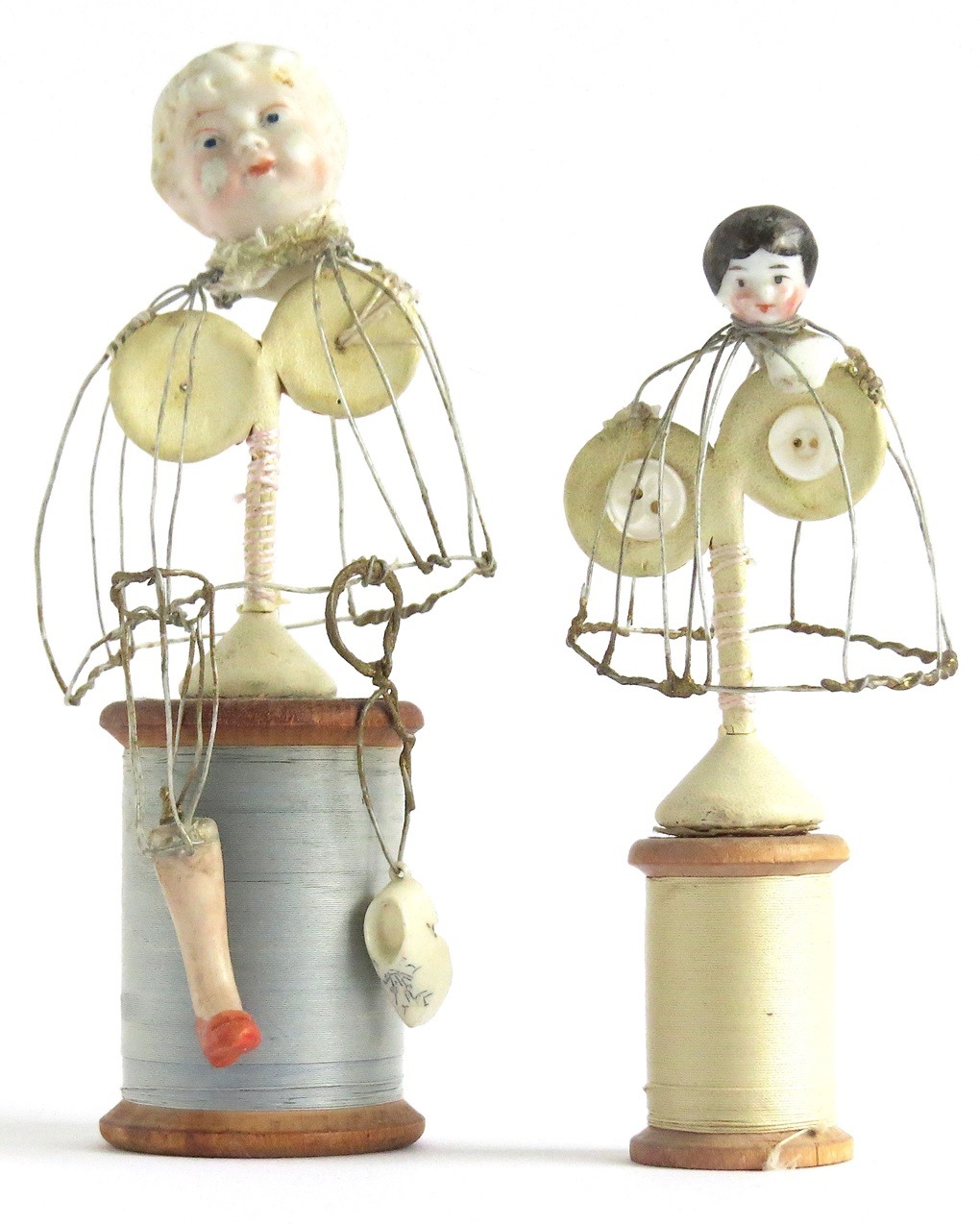
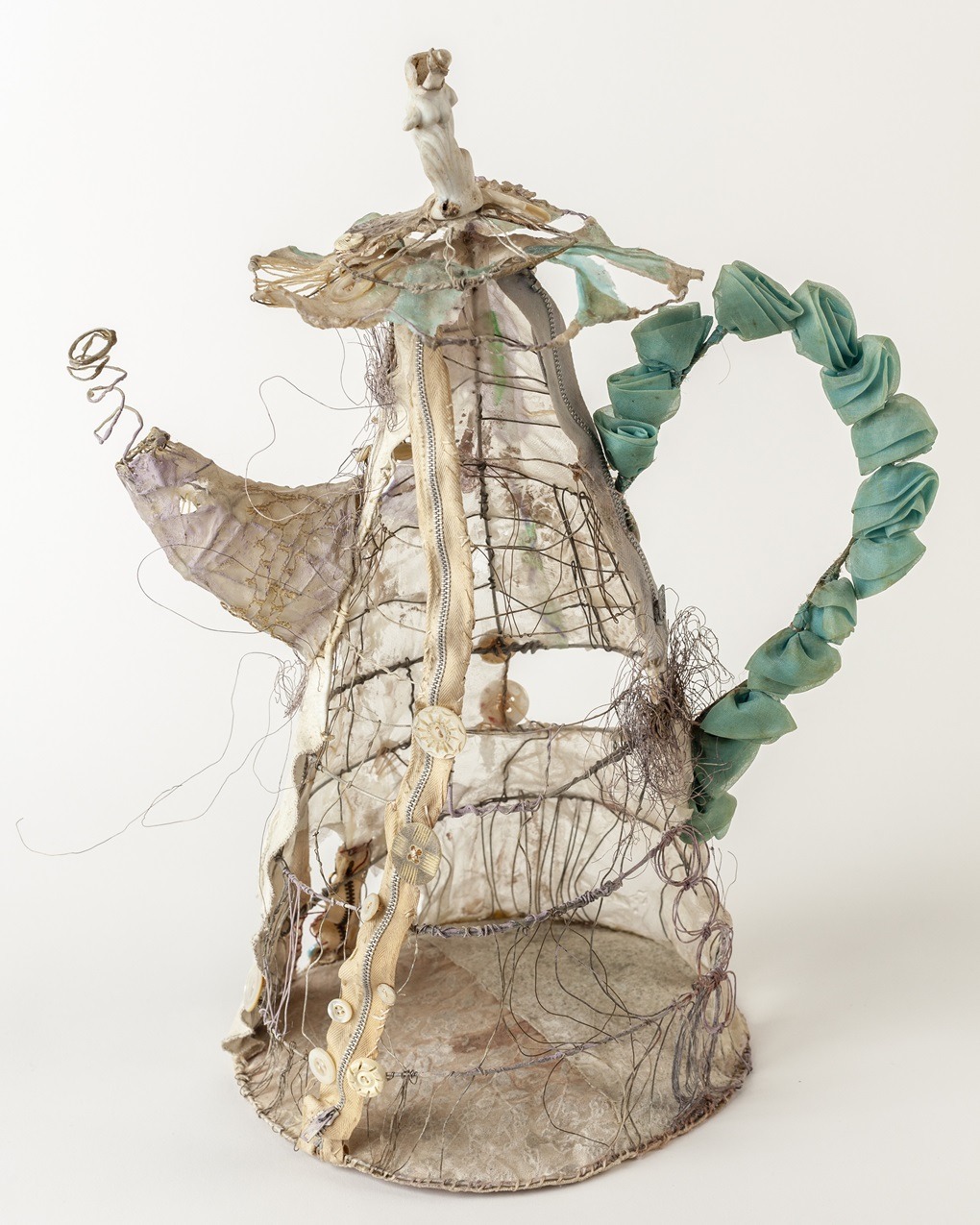
Call & response
I am constantly inspired by my own collections of ephemera, vintage textiles and ceramics. It’s important that my work is meaningful, whether it’s inspired by an archive or collection, or something that is deeply connected to me personally.
I recently became very excited by The Gawthorpe Textiles Collection created by the Honourable Rachel Kay-Shuttleworth MBE (1886-1967). The archive is the most wonderful collection of global textiles spanning centuries of textile practice.
As members of the art group Decorum, we often work with museum archives making a contemporary response to a permanent collection. We were invited by the curator to use the Rachel Kay Shuttleworth archive for inspiration for Exspiravit, a group exhibition at Gawthorpe Hall.
I visited the archive multiple times and I was able to sketch and make drawings of several items. I was particularly captivated by the vast collection of pincushions in the archive. These often tiny, overlooked items were so carefully and beautifully executed I fell in love with them and used the collection to base my contribution to the exhibition.
During my research, I discovered that pincushions had several different names over the centuries, one of which was ‘Pimpilowes’. This fascinating history was compelling. There is nothing significant or special about a pincushion, but it made me consider more deeply the use of tools in my own practice and the seemingly insignificant.
An embroiderer and seamstress like myself couldn’t manage without these small but precious items. I’ve been so inspired by these textile artefacts I plan to continue to develop more ideas based around pincushions for another exhibition.
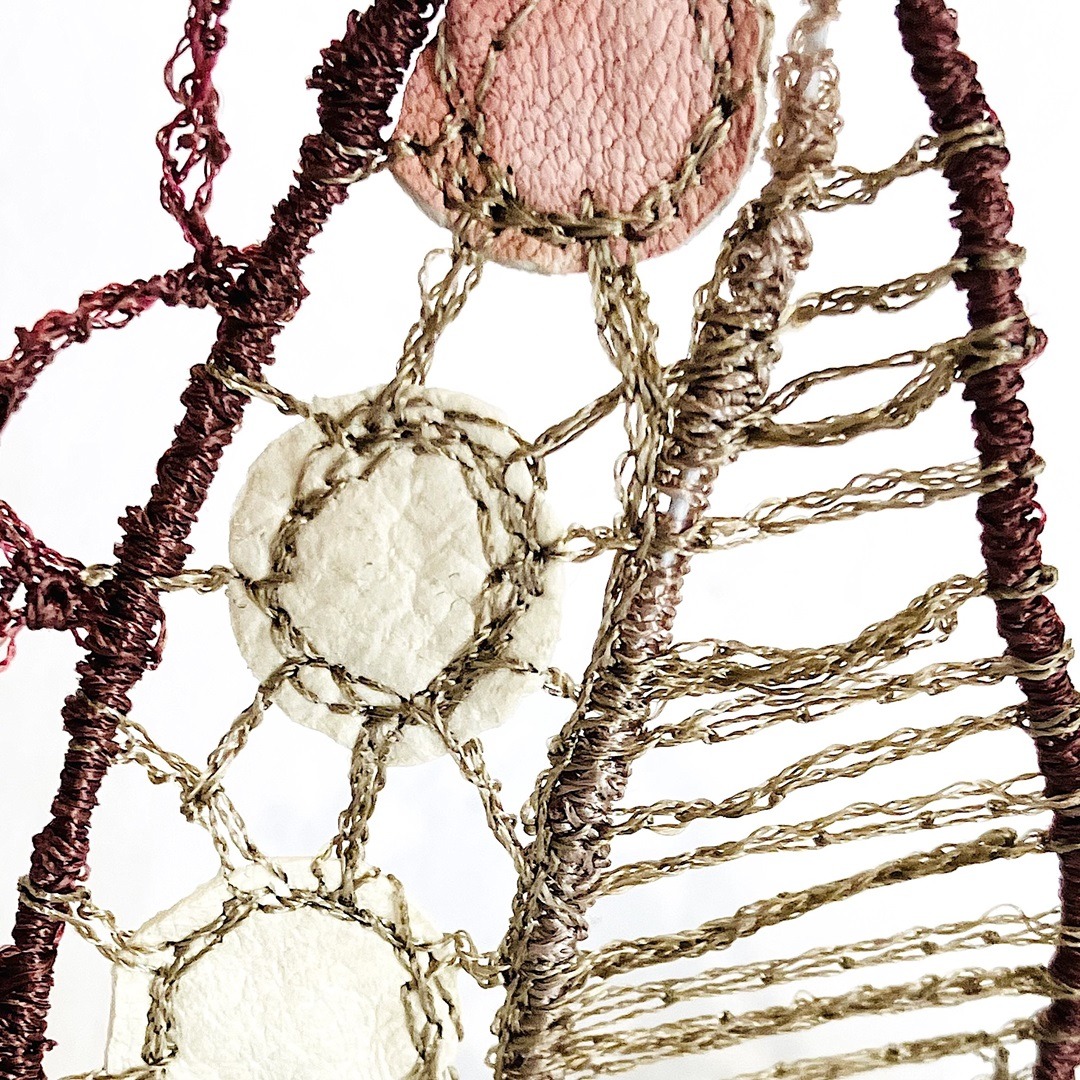
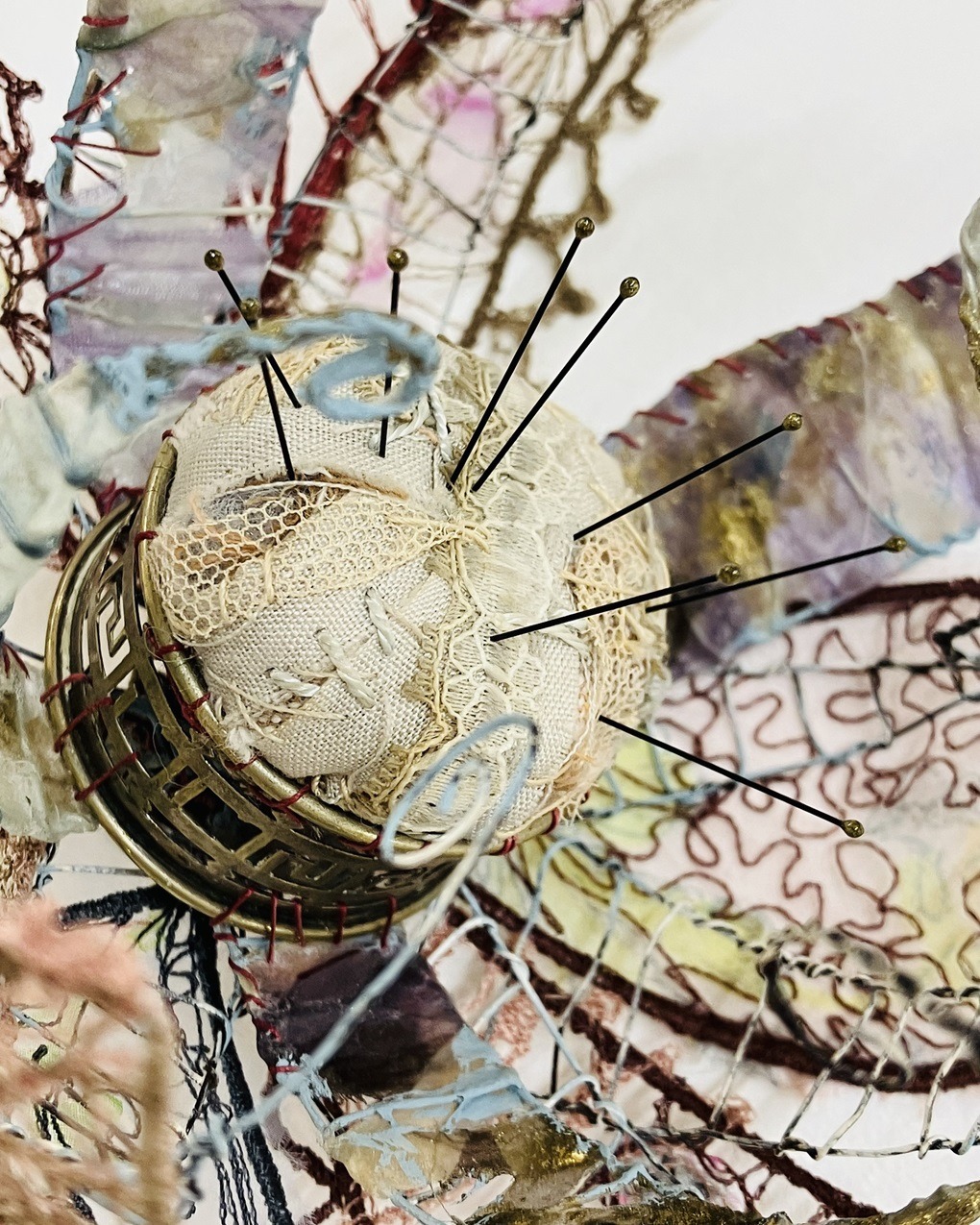
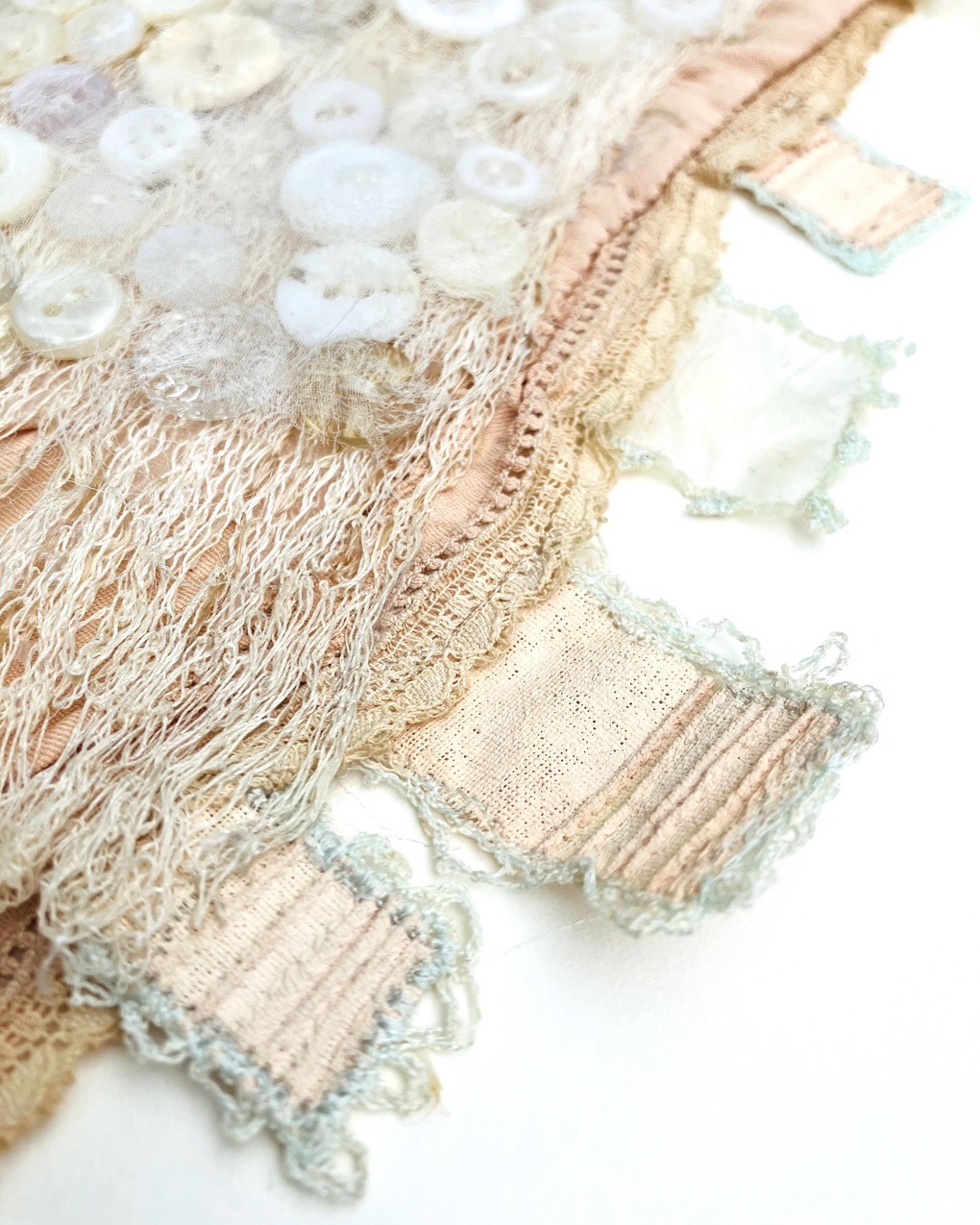
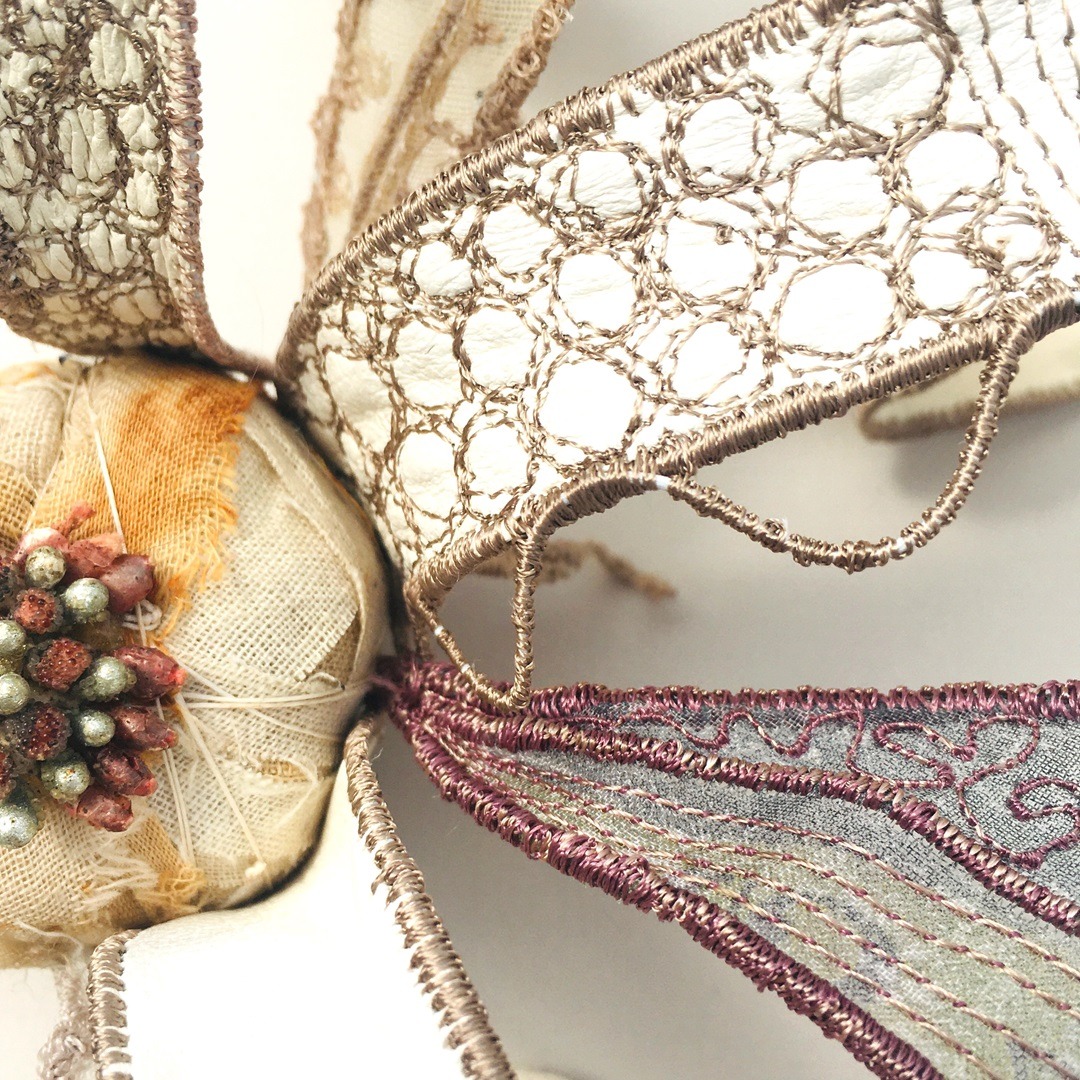
Seeds of sustainability
My ‘make do and mend’ ethos has sustained me over the years and contributed to the work I’ve become known for. It has been an integral part of my thinking since I was a child and I can pinpoint exactly when it started.
I often used to go to jumble sales on Saturday afternoons with my grandmother. On one of these occasions, when I was about eight years old, I bought a skirt. I was disappointed to discover there was a hole in the fabric, so my grandmother suggested we give it to my great aunt to repair.
My great aunt was an excellent seamstress and dressmaker so I was really excited to see how she had fixed the hole. When she showed me the repair, I remember the hole had been carefully patched but the patch was made from the same fabric. I couldn’t understand where she had found identical fabric to mend the skirt – I thought it was magic.
My aunt tried to get me to guess but I couldn’t. She then explained she had taken a small section from the belt tie – making it shorter – and used it to make the patch. I was stunned by her creative thinking and the brilliance of her skill.
“At that moment I knew that making, mending, and sewing were all I wanted to do for the rest of my life.
Since then, recycling and repurposing have become second nature to me – they naturally fed into my practice right from the beginning.”
Priscilla Edwards, Textile artist
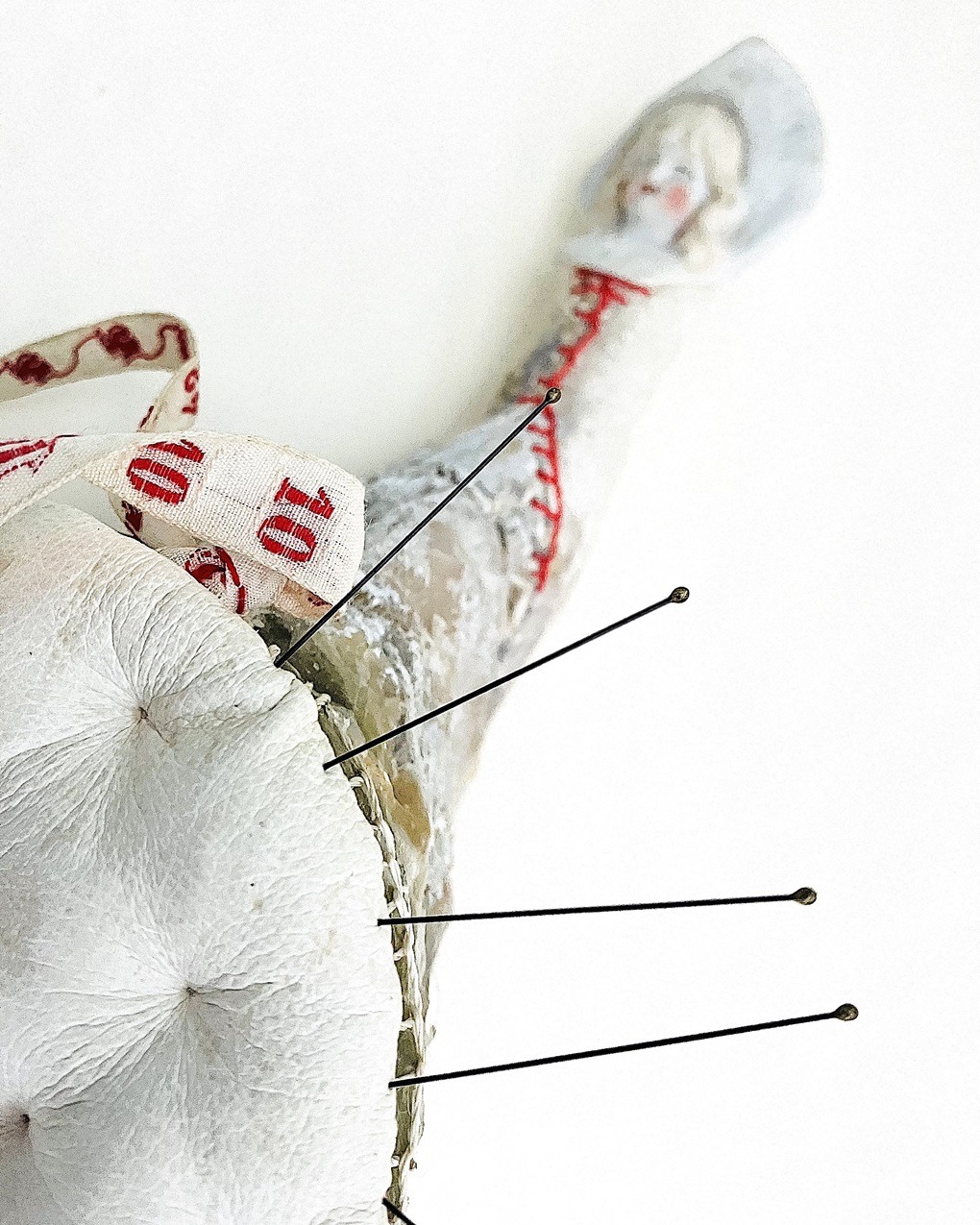
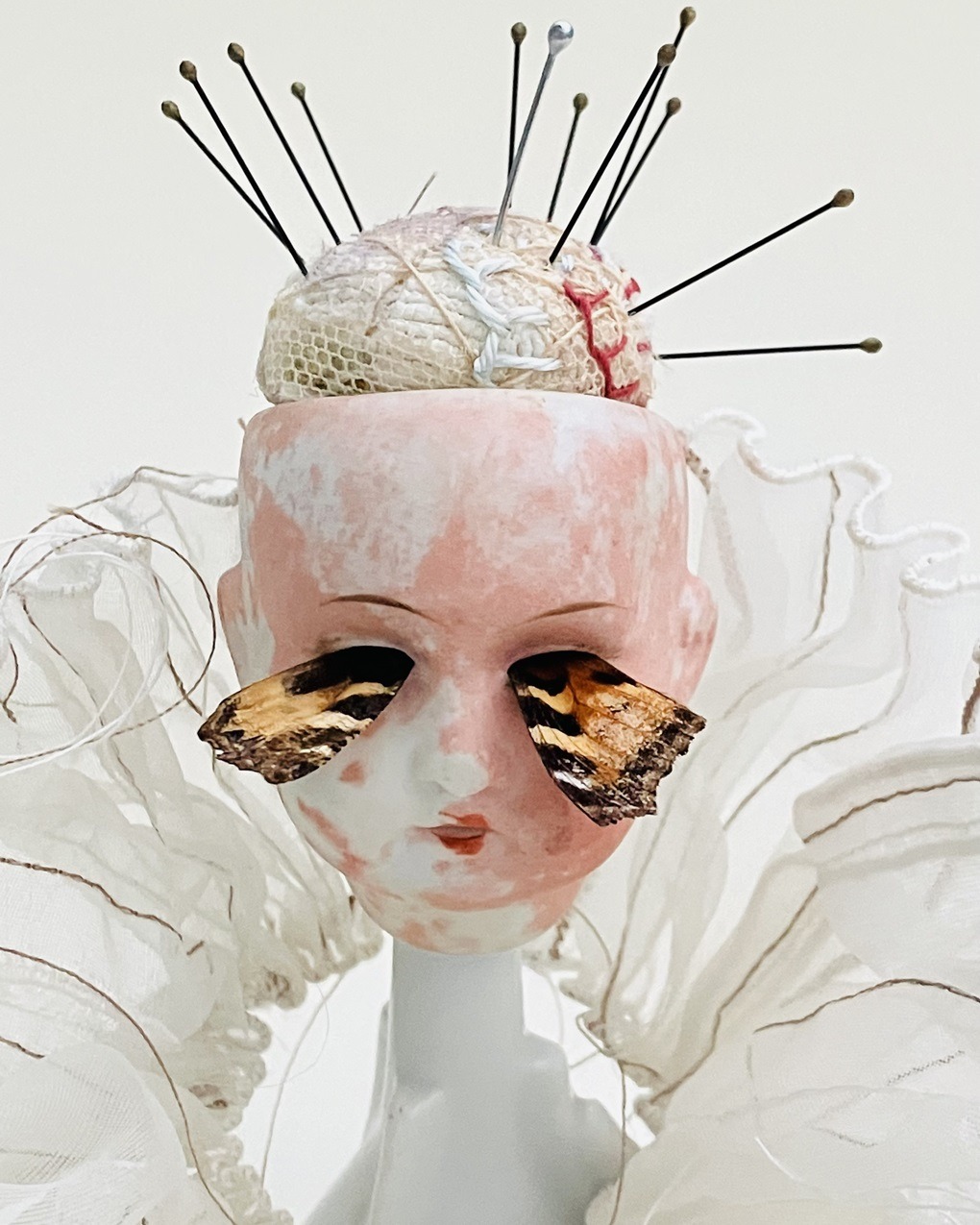
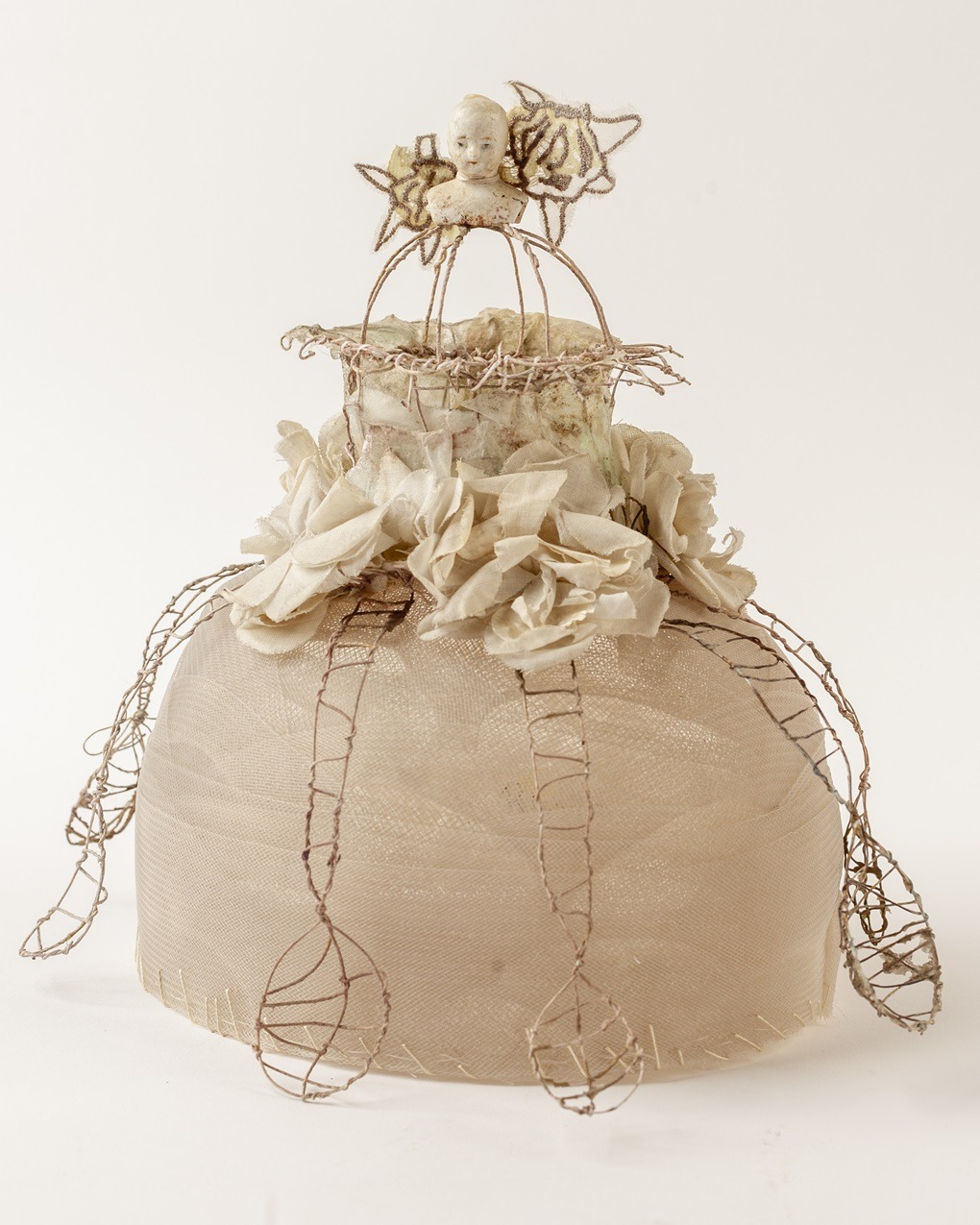
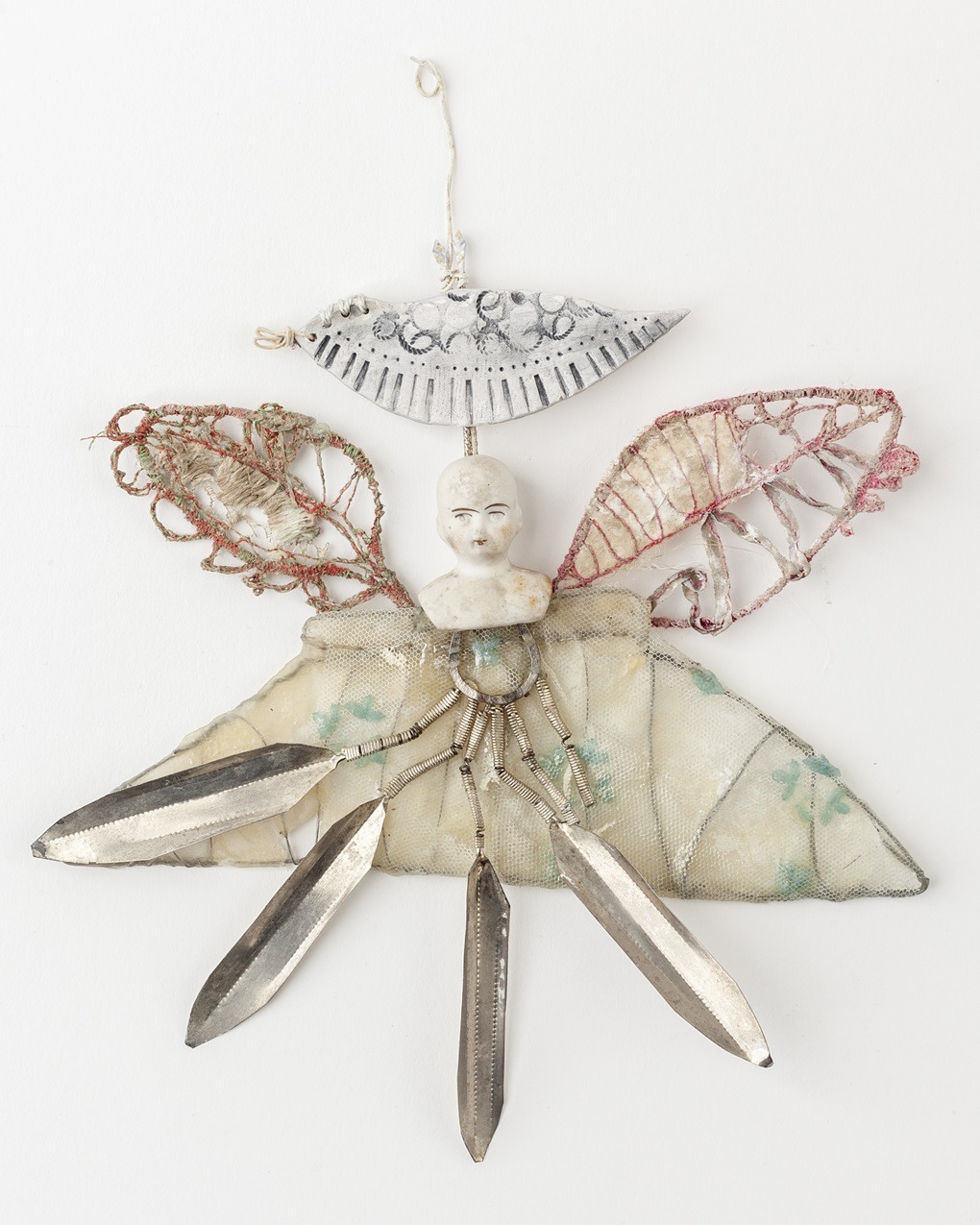
People & places
I am from Lancaster, UK, and was brought up in the seaside town of Morecambe; it is the most beautiful place to live. I returned to my hometown after studying in Manchester in the late 1990s. Studying at the Manchester School of Art was an incredible experience.
You really felt a strong sense of history due to the institution’s links with design and industry in the city. The course was thorough and rigorous but also innovative, and staff so inspiring to work with.
“You were always being encouraged to push the boundaries of what embroidery could be.
I don’t think I would be where I am today without this springboard, it opened so many doors for me later.”
Priscilla Edwards, Textile artist
After graduating I wanted to stay in the northwest of England, not just because it’s so beautiful and it’s where I’m from, but it’s also such an inspiring part of the UK. The creative industries here are dynamic, there is so much going on and living close to Liverpool and Manchester is a real bonus.
I now live in Grange-over-Sands on the other side of Morecambe Bay and work from my home studio. From here, I can get to and from most places in a day, including major cities like Glasgow and London. This is important for my teaching practice because I do such a lot of day workshops and short courses.
Most of my family live locally including my parents and sister. They are, and always have been, a huge support over the years. My husband is also creative. We met at college where we were both studying art and design before going off to university. It has been great to share my life with someone who understands the process of making work and working in the creative industries.
My sister is a photographer and actor, and we have collaborated on some projects in the past. The first time was for an exhibition about Morecambe Bay. I created a piece for an exhibition about two sisters that tragically drowned at the turn of the last century in the bay and my sister made a voiceover to complete the work.
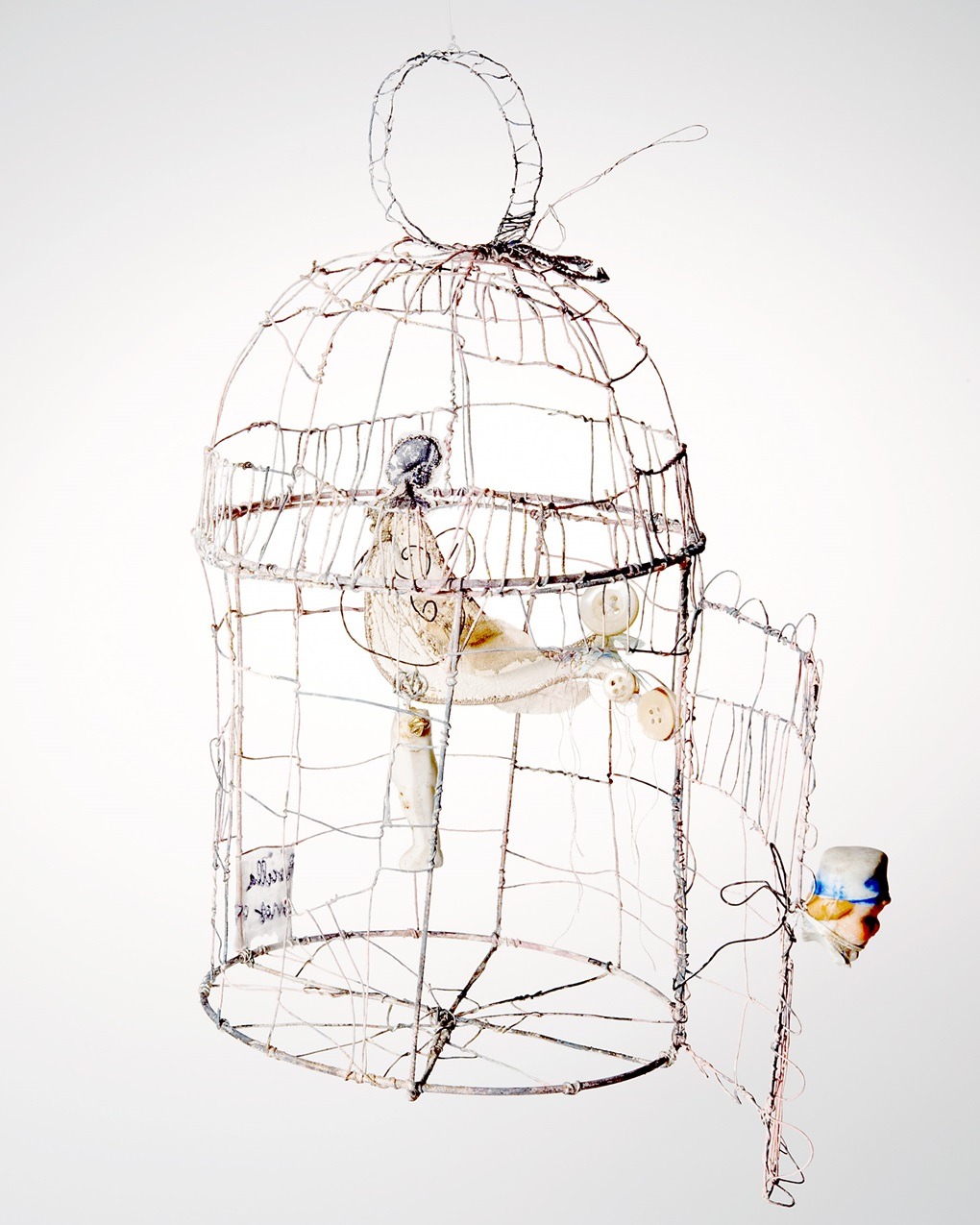
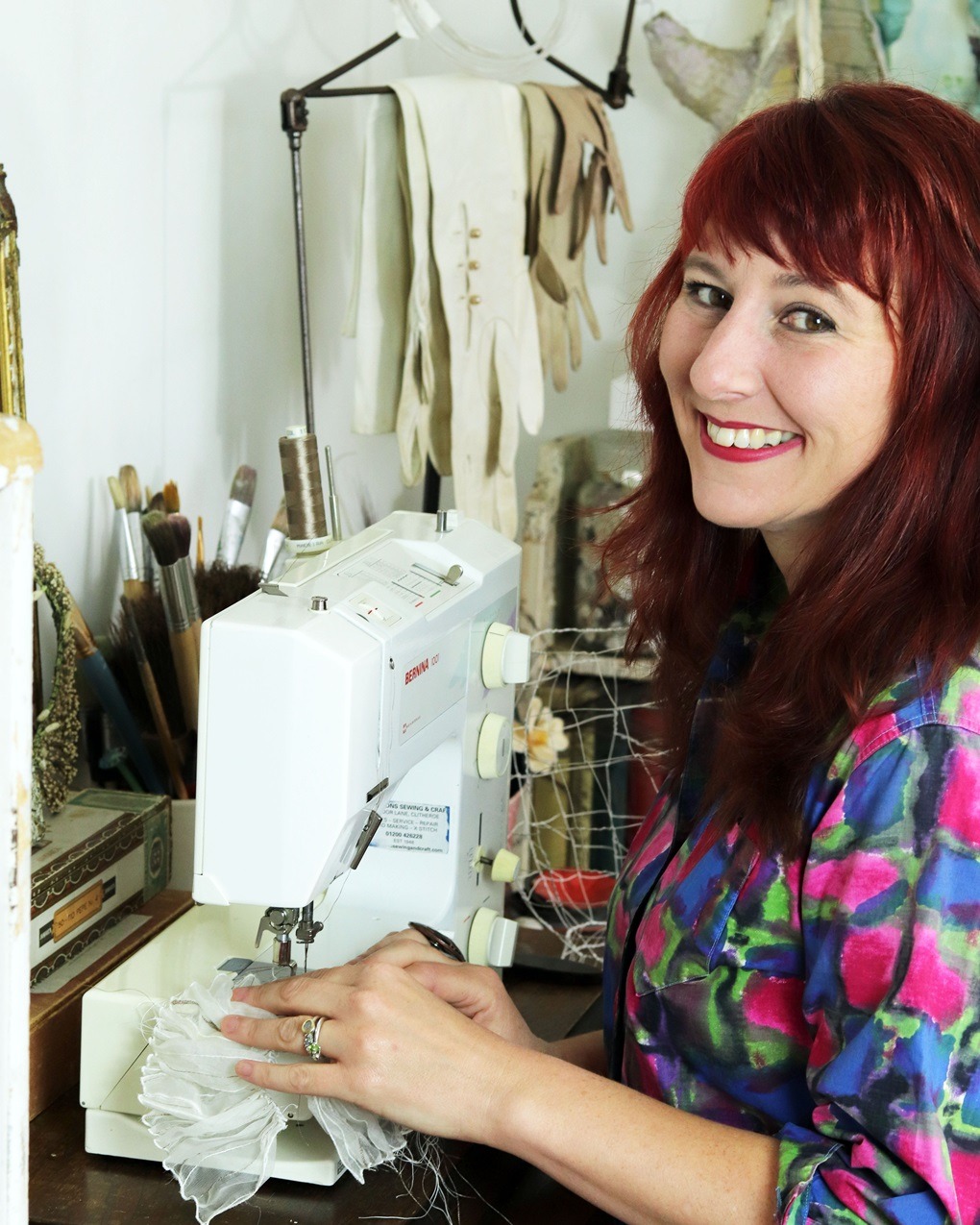
The challenge of making
As a self-employed artist, there is always a lot to do: admin, accounts, marketing, photography, planning meetings and visiting and liaising with galleries, delivering and collecting work. Teaching is also a big part of my working week.
I teach independent workshops as well as those for The Open College of the Arts. While I love it, preparing for sessions does take a lot of time and lots of forward planning is key so I can engage with students. I often have to work weekends and I have to be careful to take time off during the week so I get a break. My working week has to be very flexible.
I am a committee member for an arts organisation and an active member of Decorum, an arts group I co-founded several years ago. We exhibit around the UK and often work with museum archives making a contemporary response to a permanent collection.
There is such a lot to do as a self-employed artist, and so making work has to be fitted into and around other parts of my working week.
“When I do get to make work, I love to experiment with ideas and processes creating work that is playful and intuitive.
These are the special times when you can really get immersed in the making of new work.”
Priscilla Edwards, Textile artist
Home & away
I’ve been fortunate to exhibit work all over the UK and beyond; I’ve shown work in Sweden, Germany and the USA. I also used to do a lot of freelance embroidery, designing for fashion fabrics selling in Paris, New York and Japan.
I really enjoyed the challenge of working in this industry. Because much of the work was creating patterns and motifs, I became a much more competent embroiderer.
I began to focus more on making one-off pieces for galleries in 2002. This led me to exhibit regularly for a decade at The British Craft Trade Fair. It was here that I won my first award. It was a lovely moment to be selected when there were so many other talented artists creating work at such a high standard.
It was during my time exhibiting here that I was inspired to open my gallery, which I had for just over seven years. I loved working with so many artists from around the UK and having the opportunity to curate some beautiful exhibitions.
In 2019, I was invited by Search Press to write a book about my sculptural textiles for The Textile Artist series. I worked with a superb team, who really brought my work to life, and I’m extremely proud of what we achieved. I feel honoured to be part of this series.
I’ve been lucky to have had great features in several magazines both in the UK and the US. Sew Somerset based in California have done lots of features and interviews using my work in several of their publications. I really value their support for my practice.
I have been privileged to work with Fiber Arts Australia. They invited me to Victoria to teach at their Autumn School. It was a truly inspiring experience and amazing to be working alongside so many talented artists from around the world.
“Working with international magazines, publishers and arts organisations has been incredible, as you get a valuable insight into how other countries view textiles art.”
Priscilla Edwards, Textile artist
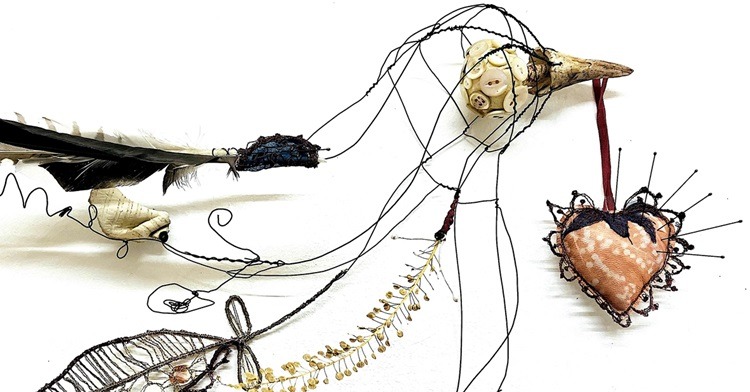

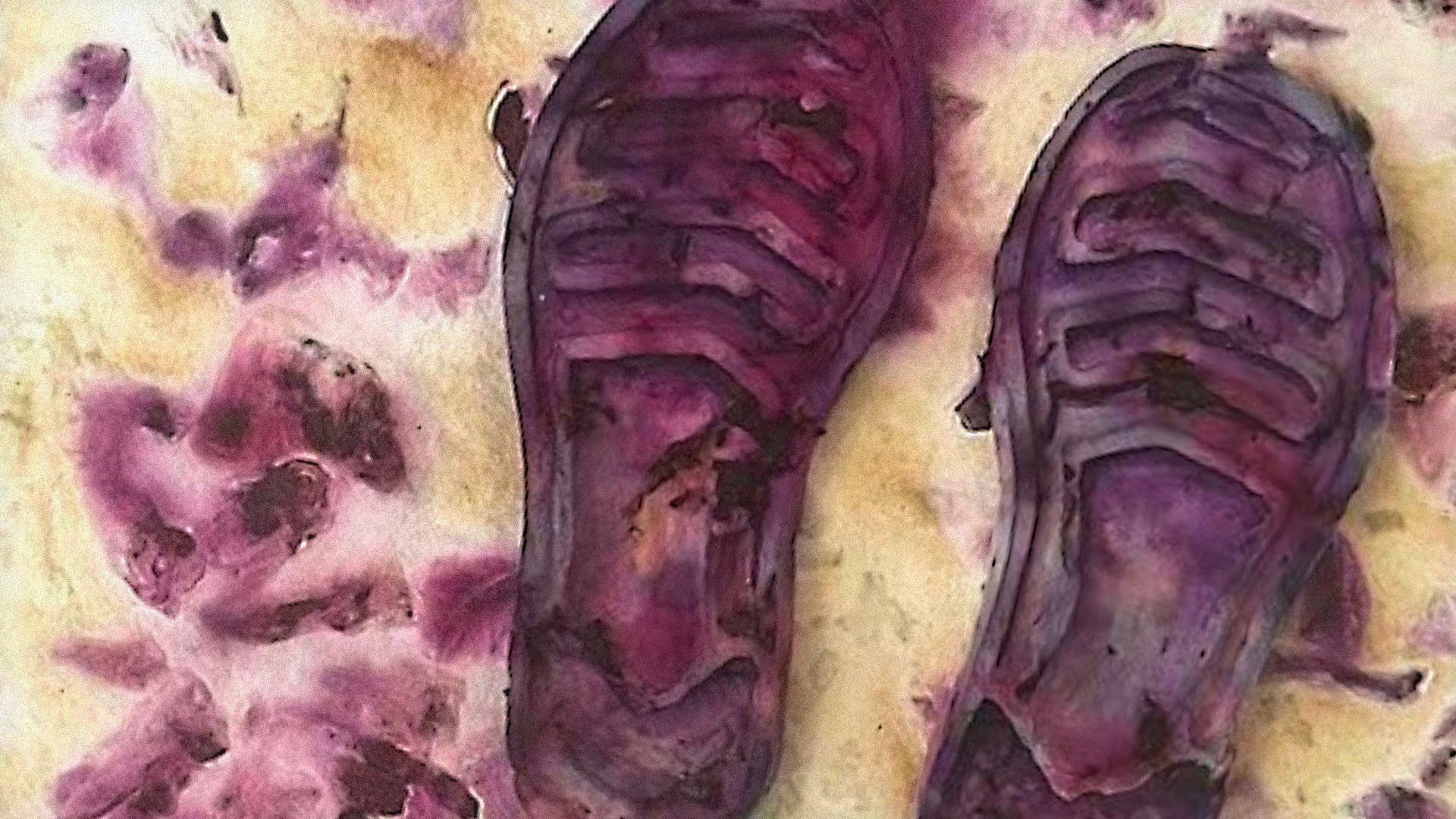
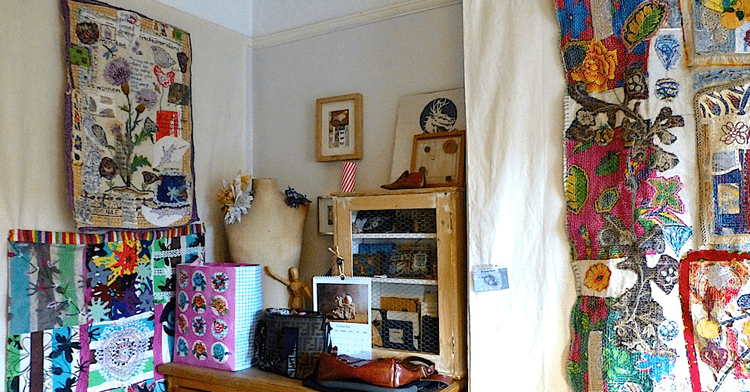
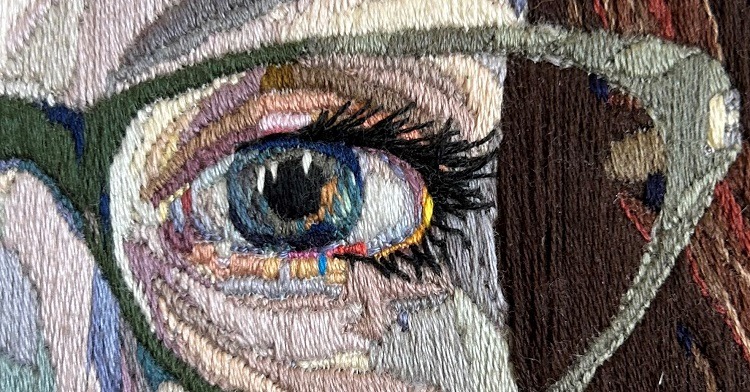
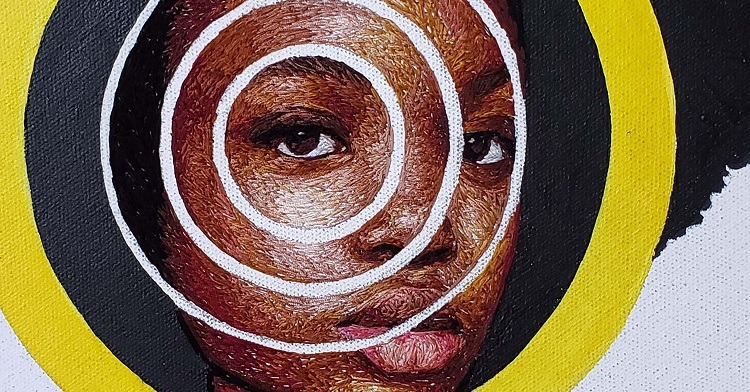
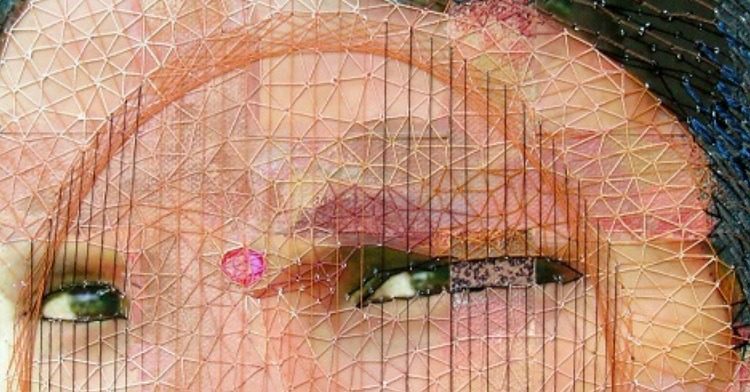
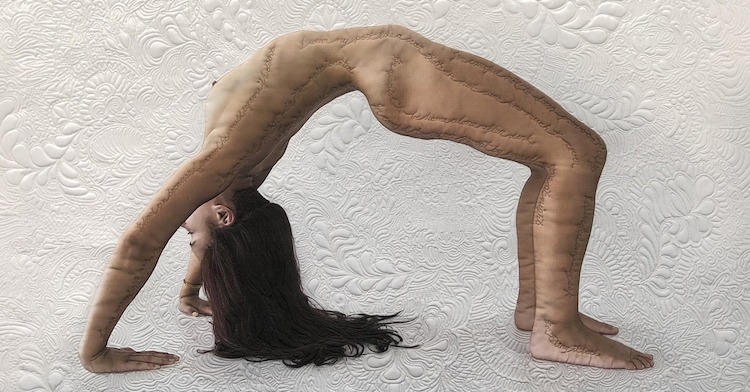
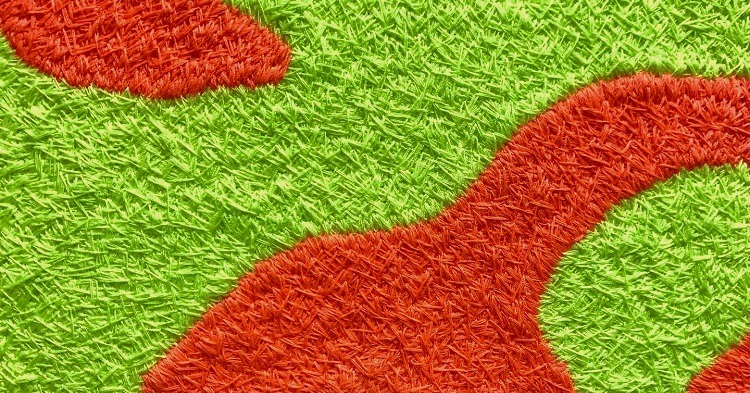
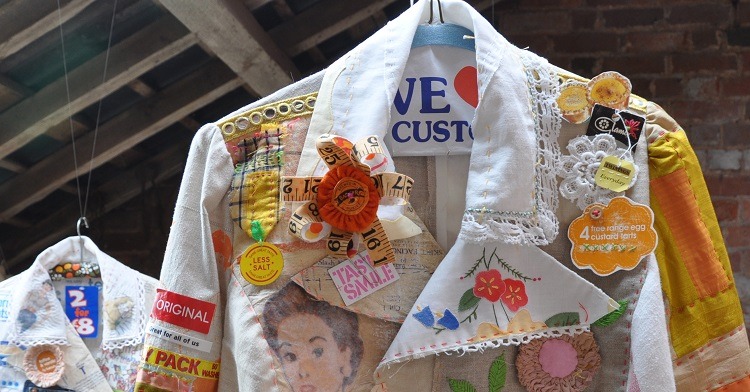
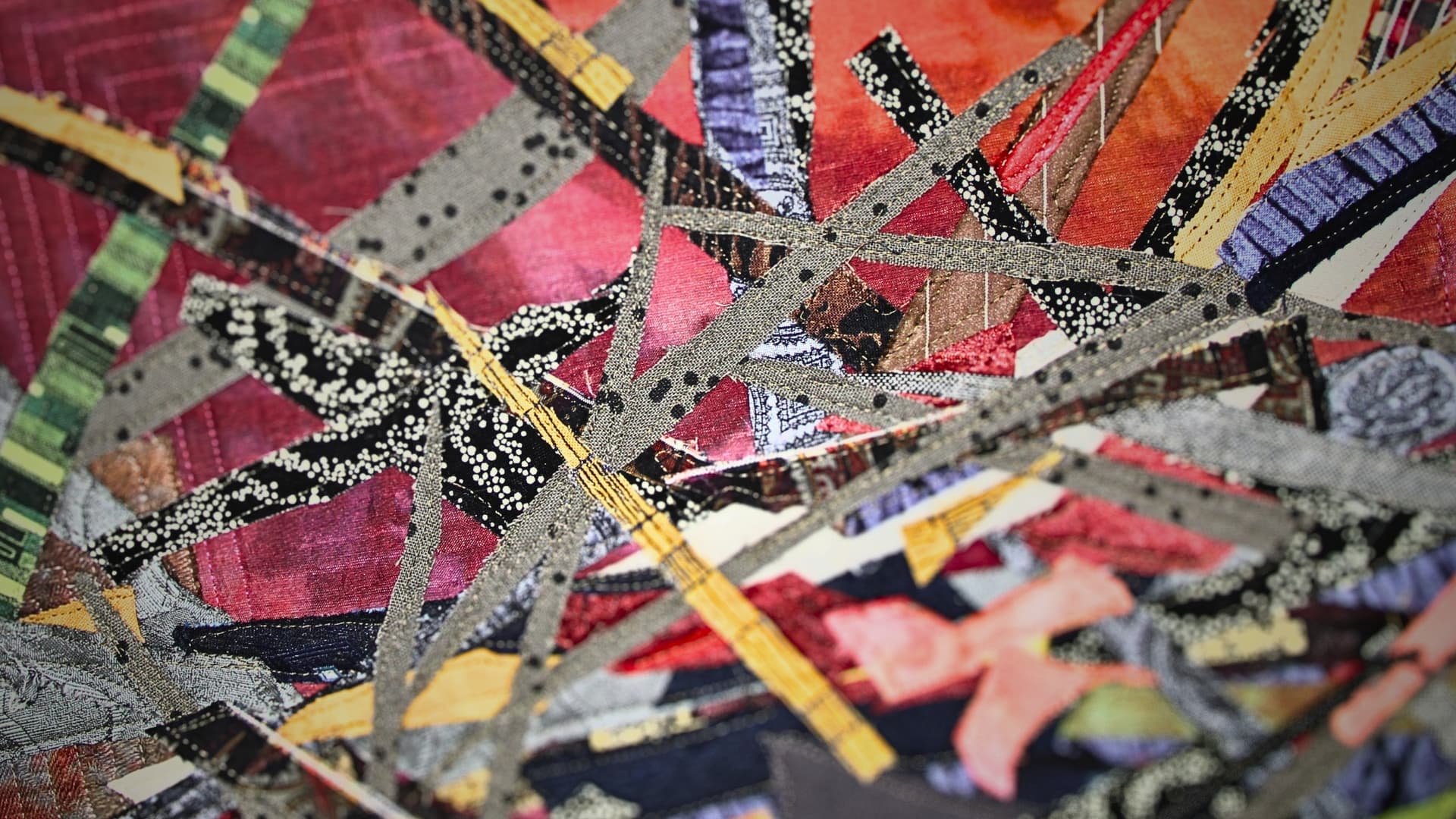
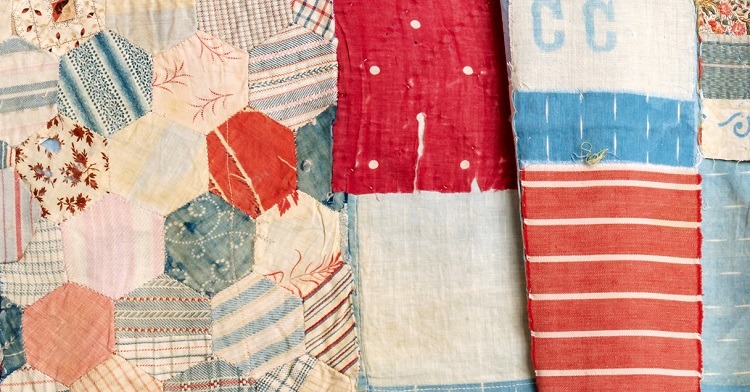
4 comments
Karin Dempsey Greenwood
Stunning Artwork. So different. Love it. ❤️
Franny
Wonderful wonderful! Article is so inspiring no matter what your favorite creative medium is. Thank you! Well done!
Lisa
Brilliant article, really interesting and inspiring!
Priscilla Edwards
Thankyou for your lovely feedback!
Priscilla